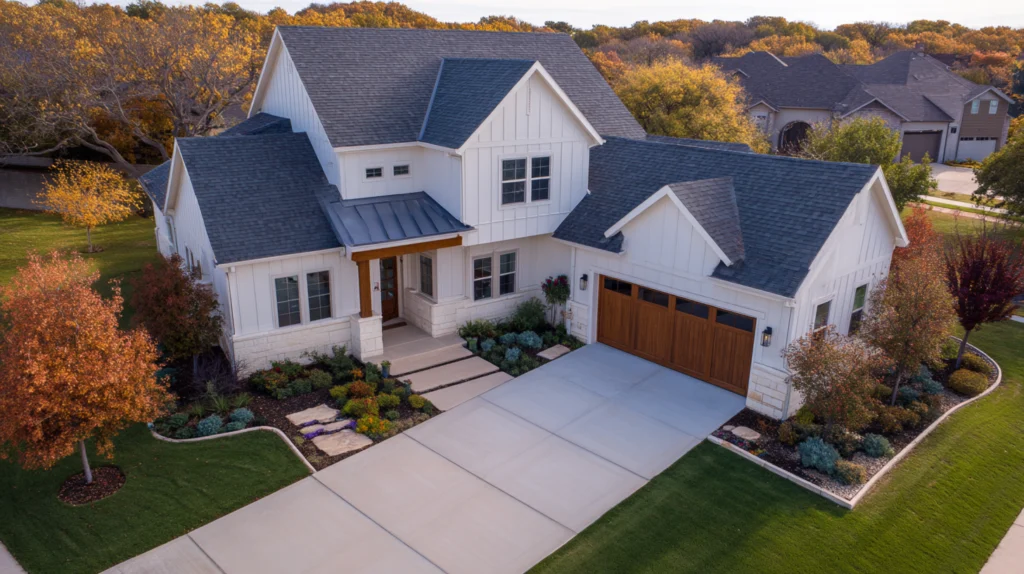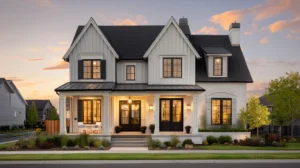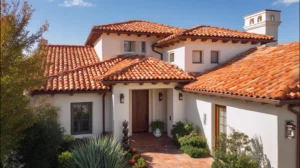Choosing the right roofing material is one of the biggest decisions for homeowners in Northern California, especially when comparing metal roof vs shingles, or deciding between metal roofing systems and traditional asphalt shingles. Your roof protects everything beneath, influences energy efficiency, determines cost over time, impacts appearance, and affects long‑term maintenance. This guide helps you understand tin roof vs shingles, metal roof cost, asphalt roofing pros and cons, so you can decide what’s best for your home.
What Is Meant by a Metal Roof vs Shingles
Metal Roof Material and Types
A metal roof means roofing made of metals such as galvanized steel, aluminum, zinc, copper, stone coated steel, or other metal roofing products. Styles include standing seam metal roofs, metal panels, corrugated panels, metal shingles, and standing seam. These metal roof types differ in cost, durability, fire resistance, appearance, and metal roof installation requirements. The Metal Roofing Alliance is a great resource for homeowners seeking trusted information about metal roofing systems.
Asphalt Shingles and Traditional Roofing Materials
By contrast asphalt shingles refer to roofing material made of asphalt‑saturated base (often fiberglass or organic) with granules. The asphalt coating protects the shingle material from UV damage and water infiltration. Under that are traditional asphalt shingles, architectural asphalt shingles, composite shingles, wood shakes, wood shingles, slate styles and more. Traditional roofing materials usually include asphalt roofing, wood shakes, tile, and similar. Traditional shingles are familiar, widely available, and lower in upfront cost compared to many expensive roofing materials.
Cost Comparison: Metal Roof Cost vs Asphalt Shingles Cost
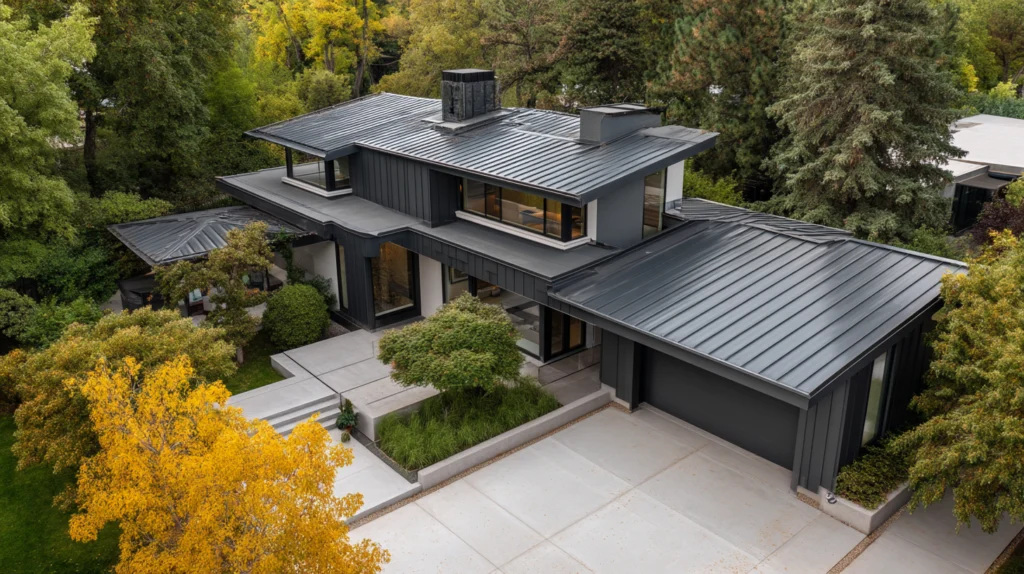
Upfront Material Costs and Installation Costs
When comparing metal roof cost to asphalt roofing cost, the difference is often significant. For shingle roofs, material and labor combined often run between $3 to $6 per square foot depending on the quality of the architectural shingles or basic 3‑tab asphalt shingles. Metal roofing systems or standing seam metal roofs can cost significantly more, often $9 to $30+ per square foot depending on metal type, finish, panel style, underlayment, and complexity of the metal roof installation.
Roof size, roof pitch, pitch steepness, number of valleys, dormers, or complex roof systems increase both material costs and labor, especially for metal roofing panels or standing seam systems. Removing an existing roof or doing a full roof replacement rather than overlaying also increases cost. These factors contribute to the generally higher metal roof cost and installation expenses compared to other roofing materials.
Lifetime Cost and Cost Comparison Over Time
Although metal roof cost is higher initially, metal and shingle roofs differ widely in lifespan and maintenance. Metal roofs tend to last 40‑70+ years, in some cases over 100 years for premium metals. Asphalt shingle roofs typically last 15‑30 years depending on exposure, quality, and climate.
Frequent repairs, replacing damaged shingles, dealing with leaks under the roof deck underneath shingle systems, and exposure to weather elements add up for asphalt shingles. Asphalt roofing often requires more frequent replacement than metal roofs. For metal roofing systems, maintenance costs are lower, with minimal maintenance, less frequent repairs, and less replacement over time. So while a traditional roofing material like asphalt shingles has lower starting cost, over several decades a metal roof often delivers better value.
Durability, Lifespan, Weather Resistance
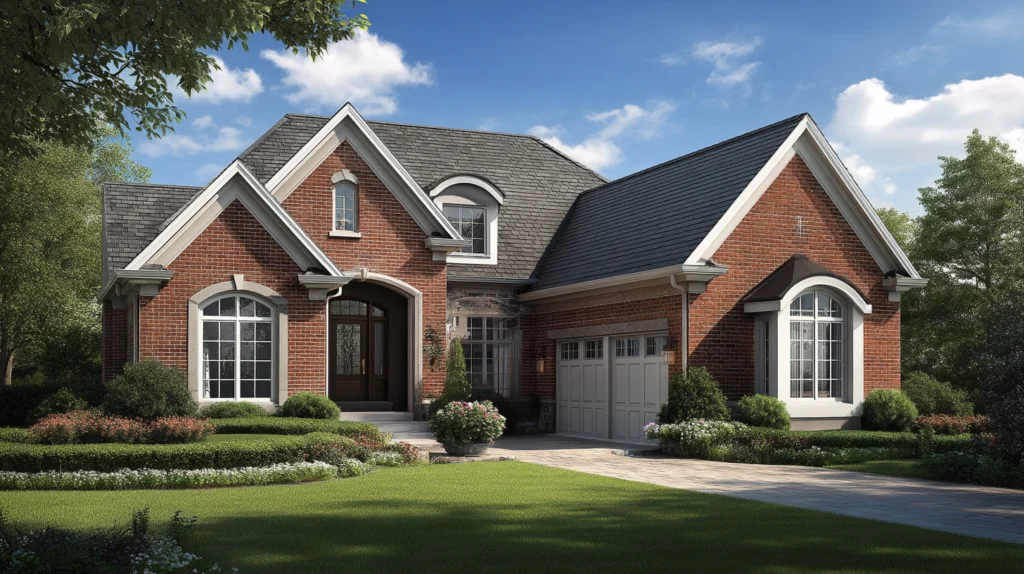
Resistance to Extreme Weather Conditions
Metal roofs excel in high winds, fire resistant performance, snow or heavy snow shedding, hail impact, moisture, rot, and pests. In areas prone to wildfires, near brush, or with risk of embers, a metal roof gives real protection. Asphalt shingles tend to be more vulnerable: strong winds can lift asphalt roofing shingles, heavy UV exposure can degrade them, hail or falling branches can cause damage, and wind uplift issues may arise.
Performance in Hot Climates and Energy Efficiency
Metal roofing makes a difference in energy efficiency, especially in hot climates like much of California. Reflecting heat, metal roofing materials often reduce attic temperatures and cooling costs. Some metal roofs with reflective or “cool roof” coatings reflect solar heat effectively, reducing cooling loads by up to 30 to 40 percent. Asphalt shingles, especially dark ones, absorb more solar heat and increase cooling costs. This makes metal roofs more energy efficient overall compared to traditional shingles and other materials.
Maintenance and Repairs Over the Roof’s Lifespan
Metal roofs need less maintenance, fewer repairs, and fewer replacements. Metal roofs tend to resist mold, mildew, moss, and algae growth. Roofing contractors report fewer leaks, fewer section replacements. Asphalt roofing requires more frequent inspections, patching, replacing damaged shingles, addressing granule loss, and ensuring flashing and sealant are intact. The roof deck underneath asphalt may rot if moisture penetrates. These maintenance demands reflect some of the cons of metal in terms of installation complexity, but asphalt shingles require more frequent replacement and upkeep.
Aesthetic, Design, and Curb Appeal
Metal roofs offer many styles now: standing seam, metal shingles that mimic tile or shake, stone coated steel, various finishes, colors, and panel profiles. Homeowners who want modern clean lines or a contemporary or rustic appearance often prefer metal roofing panels or standing seam metal. Asphalt shingles offer a traditional look, a wide variety of colors and textures, and architectural shingles can mimic depth and visual interest. For homes in neighborhoods or HOAs with a traditional look, asphalt shingles or architectural asphalt shingles may blend best. Curb appeal depends on local style, roof type, and personal preference.
Environmental Impact and Sustainability
Metal roofing often uses recycled materials, is recyclable at the end of its life, and reduces waste. Asphalt roofing, being petroleum-based, has limited recycling and often ends up in landfills after removal. The longevity of metal means fewer full replacements and less material consumed over decades. Energy efficiency further reduces your home’s carbon footprint.
Noise, Installation, and Practical Considerations
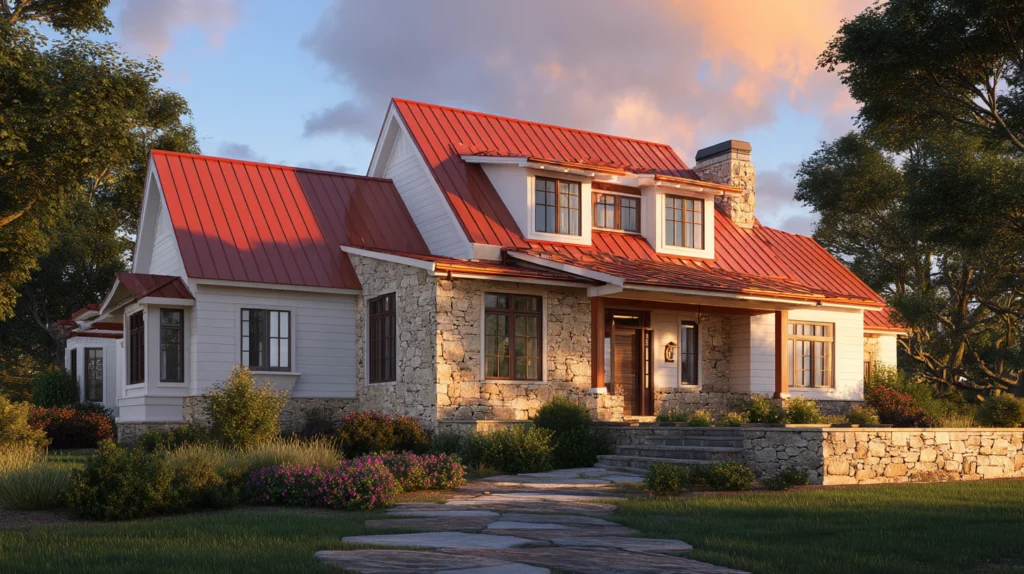
Noise
Some homeowners worry that metal roofs are noisier during rain or hail. In reality, with proper underlayment, insulation, and installation, noise levels are often comparable to asphalt shingle roofs. Standing seam systems are generally quiet when installed correctly.
Installation Complexity and Skilled Contractors
Metal roof installation is more complex, requires skilled workers, special equipment, and precise seam work or fastening. Standing seam metal roofs or premium metal panels demand more labor. Asphalt roofing or shingle installation is more familiar to most roofing contractors, quicker, simpler to install, and often lower in labor cost. When the roof pitch is steep, roof geometry is complex, or roof type is intricate, shingle installation still tends to be easier. Metal roofs may increase installation costs accordingly.
Roof Deck, Removal, Existing Roof
If replacing an existing roof, you need to consider the roof deck underneath. Sometimes the roof deck needs repairs before new roofing material can be installed. Removal of the old roof adds cost. Sometimes shingle roofs can be installed over existing layers (if allowed by local building code) to reduce removal costs, but metal roofs usually require full tear-off for best performance.
When to Choose Metal Roofing vs Asphalt Shingles
Situations Where Metal Roof Makes Sense
- Homes in areas prone to extreme weather, high fire risk, high winds, heavy snow, or hail
- Homeowners who plan to stay long-term and want low maintenance and superior durability
- When energy efficiency is a priority, cooling costs are high, or solar panels are being or will be installed
- When the appearance of standing seam metal, stone coated steel, or metal panels aligns with the homeowner’s design goals
- If long-term value, fewer full roof replacements, and less maintenance are important
Situations Where Asphalt Shingles Make Sense
- If the upfront budget is limited, cost sensitivity is high, and a lower upfront expense is preferred
- If planning to sell or move within 10 to 20 years, and a shorter lifespan is acceptable
- If the neighborhood aesthetic favors traditional asphalt shingles or architectural asphalt shingles, or if HOA guidelines apply
- If roof geometry is simple, with lower slopes, or less exposure to extreme weather
Cost Examples & Calculation

Here are examples using real per square foot costs:
| Roof Size | Asphalt Shingles (moderate quality) | Metal Roof (standing seam or metal panels) |
|---|---|---|
| 2,000 square foot simple gable roof | $6,000–$12,000 | $18,000–$40,000+ depending on metal type |
| Including removal of old roof, roof deck repair, underlayment, permits | Asphalt roofing might increase by 10 to 25 percent above base cost | Metal roof installation costs may increase by same or more depending on complexity, material finish, and labor rates |
| When factoring in lifespan, maintenance cost, cooling energy costs, and insurance savings, metal often wins over 30 to 50 years. Traditional asphalt shingles may need one or more full roof replacements in that same period plus frequent repairs. |
Frequently Asked Metal Roof vs Shingles and Asphalt Roofing Questions
Is a metal roof louder during rain than asphalt shingles?
Metal roofing with proper underlayment, insulation, and roof deck ventilation is not significantly louder than asphalt shingles. Many homeowners report similar or only slightly more sound. Quality metal roofing systems minimize noise.
Can a metal roof really last 50+ years?
Yes, many metal roof types, especially premium standing seam or copper or stone coated steel, last 50 to 70+ years, some over 100 years with proper maintenance. Asphalt roofing and traditional shingles typically do not reach that lifespan.
Do metal roofs cost more to install?
Yes, the installation costs of a metal roof are generally higher due to the higher metal roof cost, labor, specialized installation, seam work, flashings, and underlayment. Shingle installation is faster and cheaper in labor. But total cost over time often makes metal a better investment.
Can you install a metal roof over existing asphalt shingles?
Sometimes yes, but local codes and the condition of the roof deck underneath matter. Overlay might save removal cost but can limit lifespan and warranty. Many metal roofing installations require full removal for proper mounting and ventilation.
Are metal roofs better for solar panels?
Metal roofs often work well with solar panels. Standing seam metal roofs particularly allow easier mounting without penetrations. Because metal lasts long, solar panels may outlast asphalt shingles but pair nicely with metal roofs so you avoid replacing roof under panels. Energy efficiency plus the ability to mount solar enhances return on metal roofing.
What about cost of repairs and maintenance?
Asphalt shingles tend to need more frequent repairs such as replacing shingles, fixing leaks, dealing with UV damage, moss or algae, and flashing issues. Metal roofing typically requires occasional inspections, fastener or seam repairs, and less frequent replacement. Over decades, maintenance costs of asphalt tend to be higher.
Final Thoughts: Roof Type Decision for Your Home
When you consider tin roof vs shingles, think beyond just the upfront cost. Your roofing material choice impacts maintenance, durability, energy efficiency, curb appeal, and resale. If you value a long lifespan, want low maintenance, care about cooling costs, live in wildfire zones or areas with strong winds or extreme weather, metal roofing systems usually offer the most value. If you have budget constraints, need quick repair or replacement, prefer familiar traditional materials like asphalt shingles or architectural shingles, and plan to live in the home for a shorter term, then asphalt roofing remains a solid choice.
Cobex Construction Group helps homeowners throughout Northern California with both metal roof installation and asphalt shingle roofs. We provide accurate estimates, thorough inspections of the roof deck, transparent pricing, and expert guidance so you can choose the right roofing project for your home. Request your free roof replacement quote today to compare what metal and shingle roofs would cost for your home.
